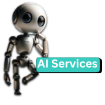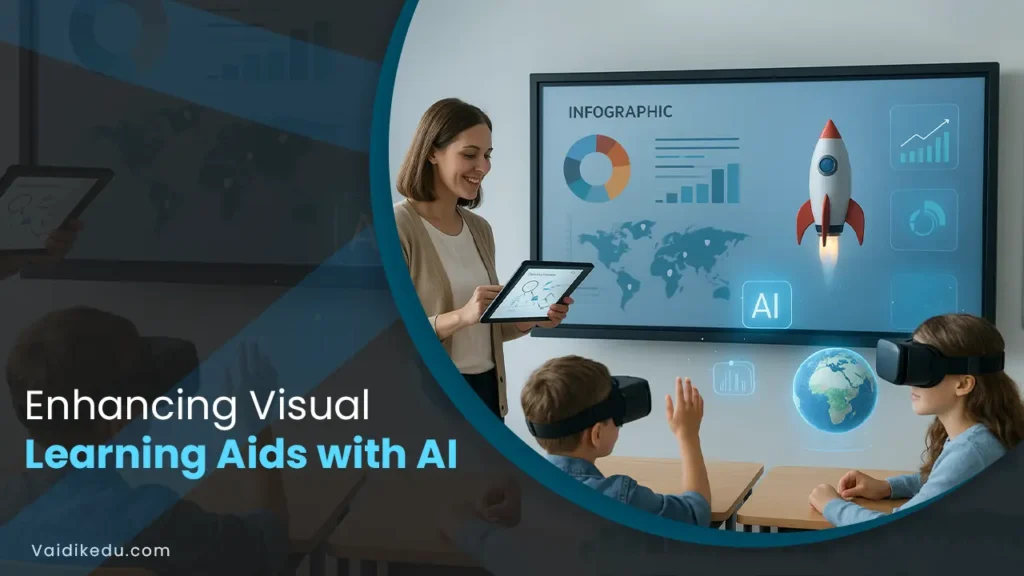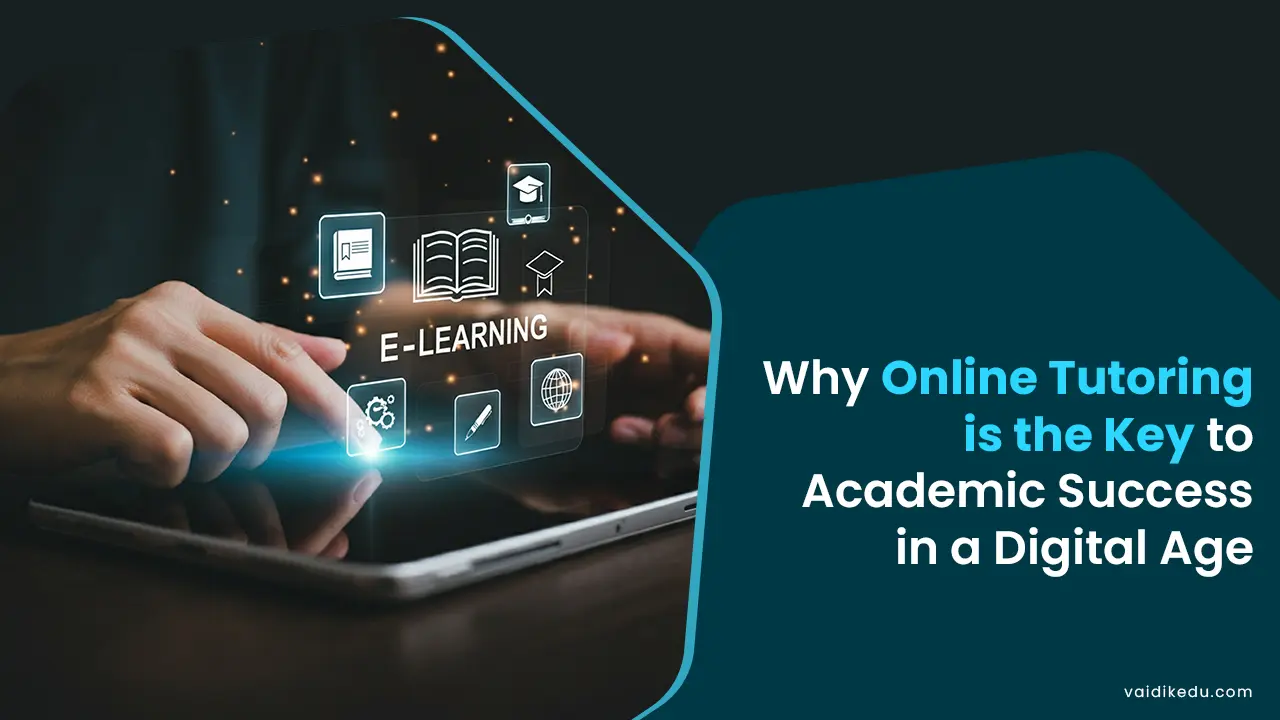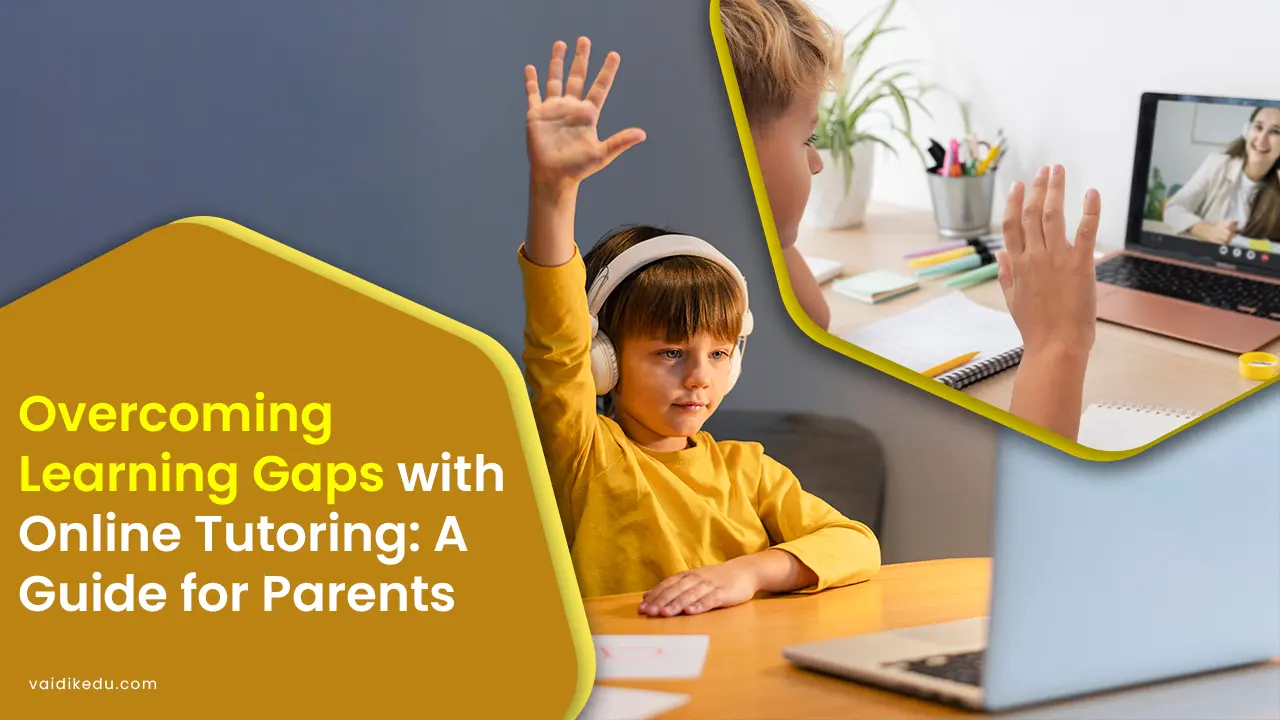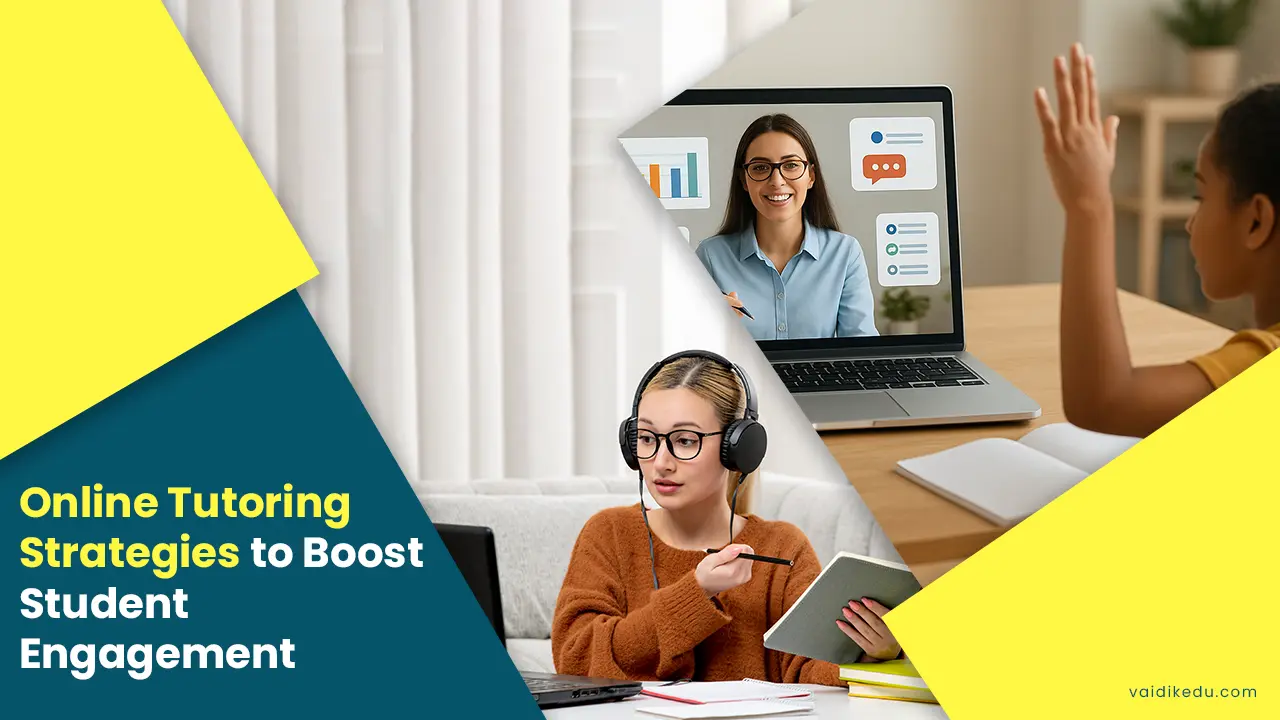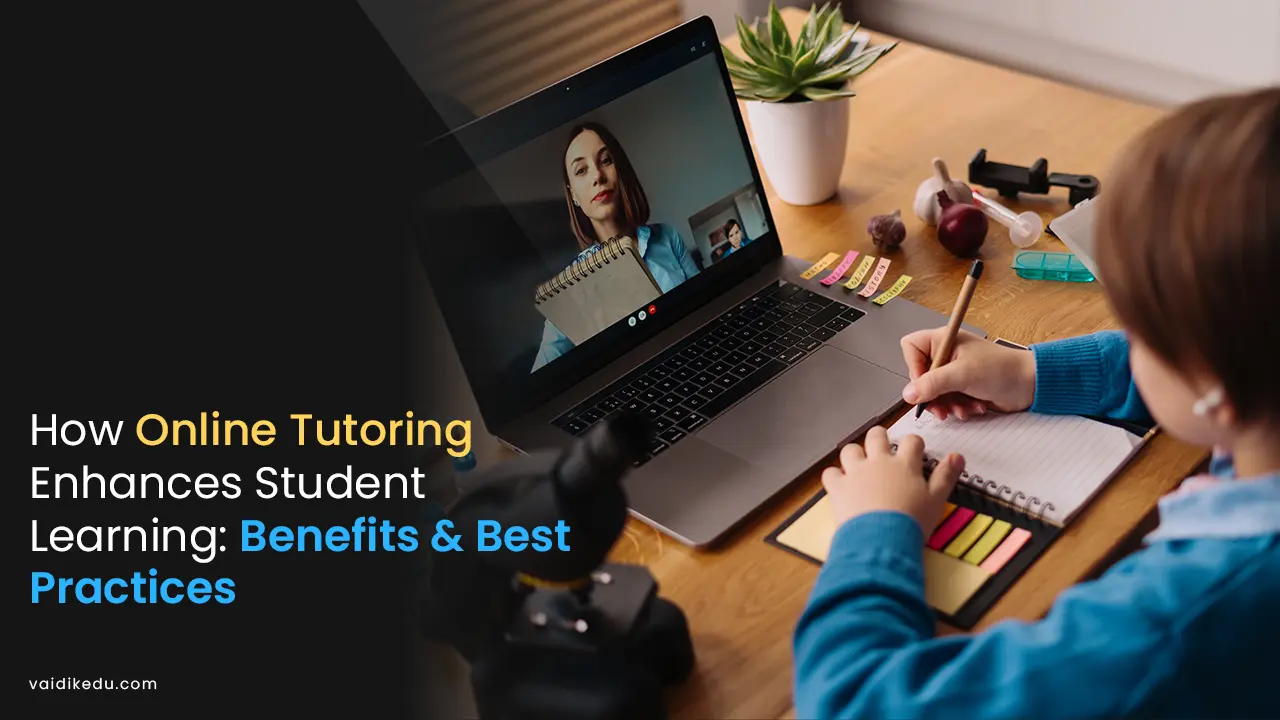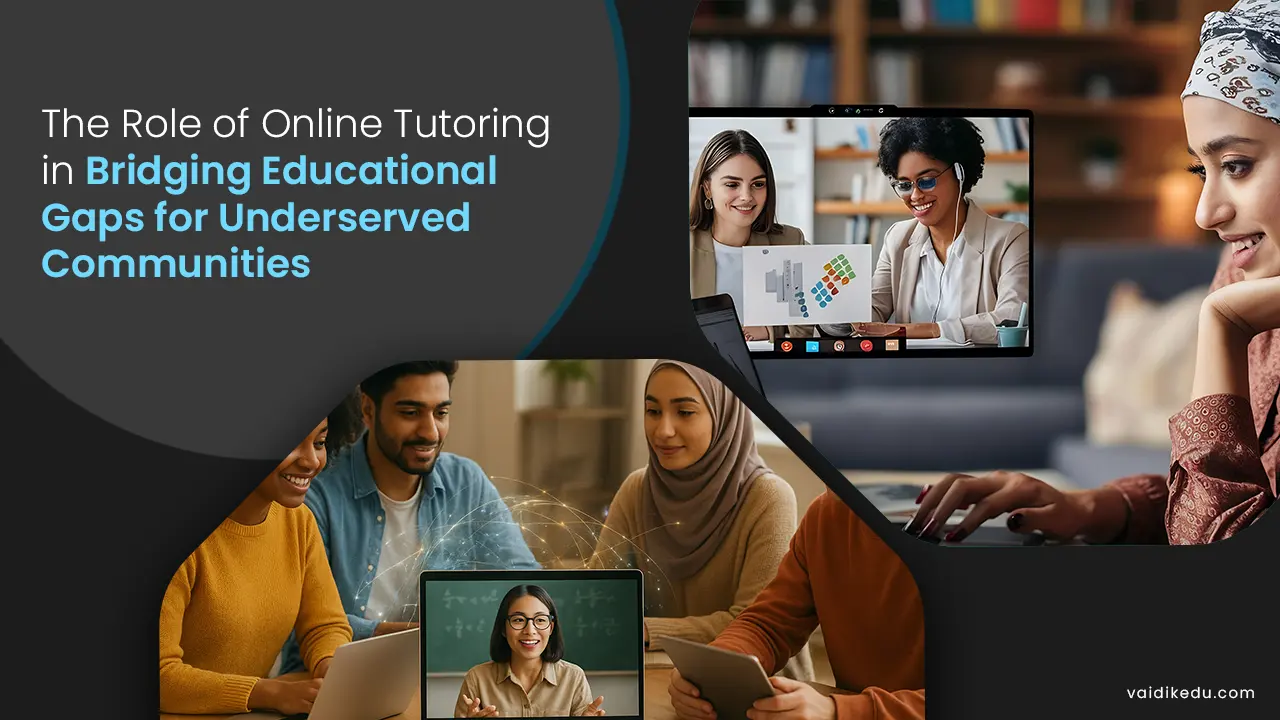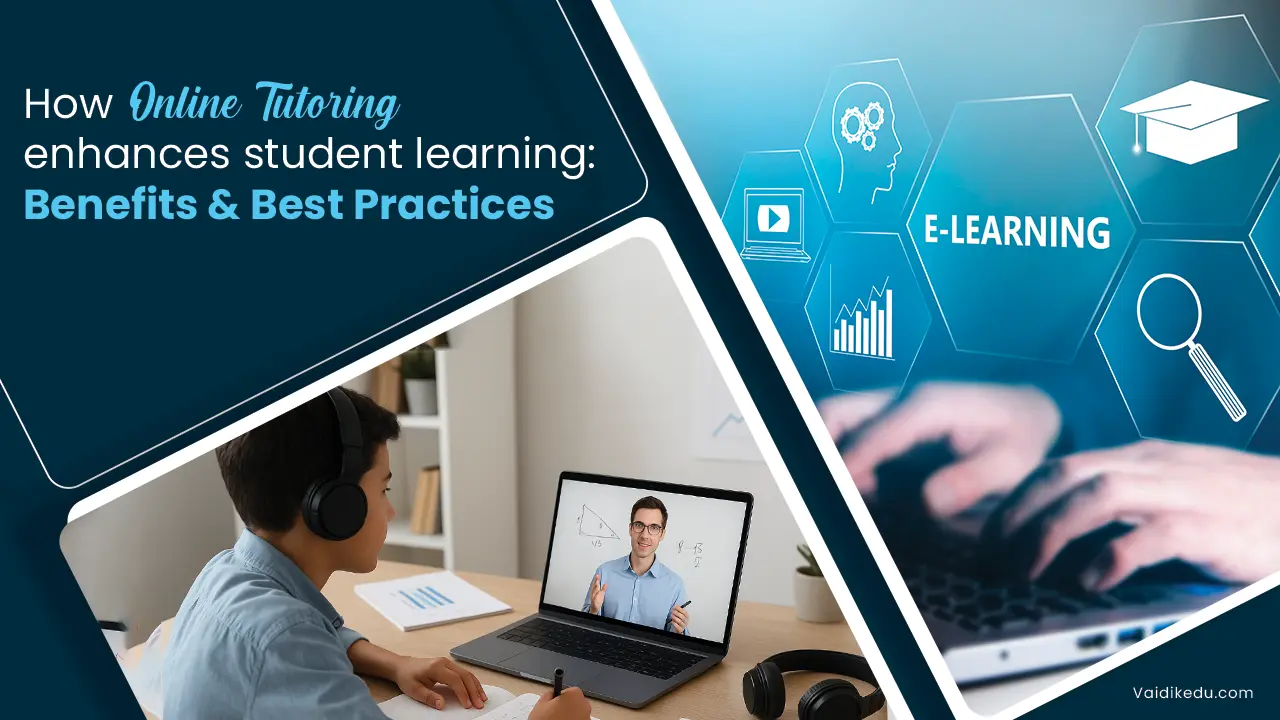The learning aids, significantly visual aids, enhanced students’ interests and understanding from diagrams and charts to two videos and interactive media.
Break the complexities for easier comprehension of various ideas according to diverse learning styles, with the growing dependency on technology for educational purposes. Conventional visual aids have transformed through artificial intelligence.
AI has shown its ability to analyse data and adapt to individual needs, generating content that can change dynamically during use. AI in educational tools allows educators to create visually rich, personalised, highly interactive visual aids.
These will not only engage students but also deepen and retain the knowledge they acquire. This is a Powerful change that will support the needs of diverse learners and help in classroom inclusivity.
Role of AI in Education:
Artificial Intelligence (AI) is the simulation of human intelligence in machines programmed to think, learn, and act like humans in an educational scenario. AI implies many technologies that allow some processing to support teaching, learning and administration.
This revolutionises the way content is presented by educators as well as how students view their learning content, specifically by using adaptive and exciting tools.
Use of AI in Education:
AI has introduced innovative solutions to educational challenges, including the following:
- Personalised Learning: Through AI-driven learning platforms. Students’ performances are evaluated, and the material is adjusted for unique needs.
- Innovative Content Generation: AI develops changing learning content through quiz summaries and pictures to explain complex topics.
- Automating Administrative Functions: AI can significantly reduce instructors’ workloads by automating grading, attendance, and scheduling.
- Virtual touring: AI chatbots and virtual tours are available to students for instant help and feedback.
Use of AI in Visual Learning Aids:
Ai supports visual learning by producing adaptive tools that blend into the individual space and style of learning. For instance,
- Machine learning algorithms evaluate how learners interact with these graphical aids, and content is adjusted accordingly.
- AI produces hyperreal virtual or augmented reality, creating an immersive experience in which abstract ideas come alive in the hands of learners.
- AI-driven tools facilitate accessibility by turning text-dense content into visually appealing forms that various learners can utilise.
Types of Visual Learning Aids Enhanced by AI:
AI has transformed the development and presentation of visual learning resources, making them more engaging, interactive and personalised foodstuff. Some of the critical types of visual learning resources supported by AI include the following:
1. Interactive Whiteboards And Smart Boards: AI-enabled smart boards enable educators to display information interactively using multimedia annotations and updates. Features include handwriting recognition, adaptive lessons, suggestions, and real-time feedback based on student interactions.
2. AI-Powered infographics And Diagrams: AI tools like Canva and Visme will generate beautiful-looking infographics and diagrams specific to certain topics, learning objectives are analysed, and content that is easy to understand is produced for students with complex information being visually presented
3. Custom Visuals For The Students: The AI platform generates visual content tailored to each individual’s learning style and performance. Some examples are adaptive videos, custom flashcards, and charts indicating which learning area needs improvement.
4. Virtual And Augmented Reality (VR/AR): AI enhances VR/AR experiences by adapting virtual environments to a learner’s space and understanding. Applications include interactive simulations, virtual labs, 3-D biology, and history and geography models.
5. AI-Generated Animations And Videos: AI-powered software produces animated visuals to explain complex topics like molecules or historical events. Videos can be auto-generated with subtitles in multiple languages and divided into shorter modules for easier learning.
6. Gamified Visual Learning Tools: AI deploys gamification in visual aids through interactive games and quizzes using charts, graphs and animations to better jog memory. These tools can also study a user’s performance and adjust the difficulty levels.
7. Real-Time Data Visualisation: AI Transforms raw data into interactive graphs and dashboards, making it easier for the students to make statistical analysis and interpretation. It is particularly very useful in the stem field as data driven inside the critical.
8. Digital Storytelling Tools: AI-powered storytelling platforms help students create visually engaging presentations, timelines, and storyboards. These tools use natural language processing, NLP, to convert text into visuals automatically.
Benefits of AI- Enhanced Visual Learning Aids:
The Indian AI in visual learning tools brings many advantages to education. It changes how students learn and retain information. Below are other benefits:
1. Enhanced Engagement And Interactivity: AI enhances tools to create an immersive learning experience through interactive elements such as animations, simulations and virtual environments. Gamified content keeps students motivated and actively involved in the learning process.
2. Personalised Learning Experiences: AI adopts visual content to match individual learning styles, pays and preferences. Real-time feedback lets students know what they are good at and where they need to work on their strengths, allowing self-paced learning.
3. Improved Retention And Comprehension: The complex concepts become simple with the I-generated infographics, diagrams, and animations. Rich visuals make information more memorable and retain it in the long run.
4. Accessibility And Inclusivity: AI tools ensure alternative formats of visual aids, such as audio descriptions, subtitles, and high-contrast designs, for the visually impaired. Language translation features make the content accessible to students from various linguistic backgrounds.
5. Real-Time Adaptability: AI analyses how students engage with visual aids and dynamically changes the content in real time to fill learning gaps. This adaptability ensures that the students get support exactly when they need it.
6. Fosters Creativity And Critical Thinking: AI technologies allow students to design their visual learning resources like presentations, infographics and storyboards. These activities will help students develop their creativity and analytical skills while recalling the subject knowledge.
7. Saves Time For Teacher: AI creates visual material automatically and enhances it. There is less of a workload for teachers. Tools create ready-made graphics charts and animations, which are ready for use according to the curriculum.
8. Promotes Collaboration: Shade, visual projects will be made within AI-powered learning platforms where collaboration is done. And the collaborative task is carried on in real time. Some other features, such as annotations and the interactive whiteboard, encourage teamwork.
By offering all the above, AI enhances visual aids for learning to make education even more effective, as well as in bridging accessibility and personalization for students preparing to succeed in today’s changing world.
Benefits of AI- Enhanced Visual Learning:
AI-enhanced visual learning transforms traditional education into more engaging, personalised, and effective learning. Some of the significant advantages of this new approach are as follows:
1. Enhances Student Engagement: AI-powered interactive visuals, such as animations, AR/VR experiences, and gamified elements, capture and maintain student interests. Real-time interaction with content fosters active participation and curiosity.
2. Simplifies Complex Concepts: AI tools create diagrams, 3D models, and visual simulations that break complex topics into more manageable formats. Abstract mathematics, physics, and biology concepts become concrete with dynamic visualisations.
3. Personalised Learning Experiences: AI analyses individual learning styles and tailors the visual content according to the same. So, every student learns at their own pace. Adaptive visuals adjust the difficulty level and content depth based on student performance.
4. Improves Knowledge Retention: Scientifically proven to enhance memory and understanding, visual aids are further enhanced by AI-generated visuals through adaptive repetition and engagement. Students remember better when concepts are presented visually in an organised and engaging way.
Challenges in Implementing AI For Visual Learning Aids:
- The creation and Deployment of AI-based visual learning aids demand significant financial resources. Hardware, software, and maintenance costs may be too high for low-resource schools.
- Many schools, especially in rural or unprivileged areas, lack the infrastructure to support AI tools such as stable Internet access and modern devices. The digital divide widens educational inequalities.
- AI tools will collect and analyse large amounts of student data to personalise learning. This is another issue of concern, as well as privacy and data security. Institutions will have to follow the laws related to data protection and the proper ethical use of AI.
- Excessive use of AI may decrease students’ critical thinking and problem-solving skills. If AI entirely replaces traditional teaching methods, passive learning by these students might be dangerous.
Frequently Asked Questions
AI enhances visual learning aids by producing interactive, dynamic, and adaptive content tailored to an individual’s needs. It simplifies complicated concepts using infographic animation, VR/ AR applications, and more to make education more engaging and effective.
AI tailors pictures based on students’ performance choices and learning pace. It dynamically changes the degree of difficulty and content and offers live feedback while feeding tailored visuals, such as videos, charts, or simulations, to support a student’s needs.
AI-driven tools enhance engagement, facilitate simplification, and improve retention of rather complex ideas, making content more accessible. They also spare educators time for automated content creation and support data-driven insights for better teaching strategies.
AI-enabled interactive whiteboard; creation of visual content via Canva and Visme; virtual augmented reality tool that gives one the real sense of experiencing what one learns and gamified learning that includes adaptive visual aids

